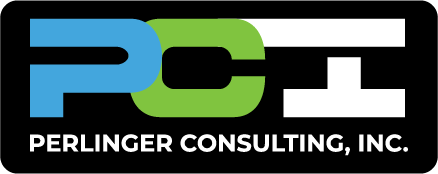Is Your Business Actually Making Money?
Is Your Business Actually Making Money? : A Comprehensive Guide for Small Business Owners
Ever find yourself up late, drowning in spreadsheets and wondering if all your hard work is actually paying off? I get it. Business profitability is like your financial Best Friend—you really want it to stick around. In simpler terms, it’s your business’s report card that lets you know whether you’re acing the game or need some extra tutoring. Cracking the Code – Calculating Net Profit: More Than Just Number Crunching Calculating net profit need not be intimidating. All you need to know is that it’s the amount left when you subtract total expenses from total revenue. Here’s the formula in its simplest form:
Net Profit=Total Revenue−Total Expenses
Total Revenue: Money coming in from sales and other income streams like investments or royalties. Total Expenses: Costs incurred running your business—everything from utilities and rent to salaries and necessary software.
Real-World Example for Small Business Owners You own a small café: You’ve invested in customer management software and focused on creating a seasonal menu to attract more customers. You rack up $15,000 in sales and spend $11,000 on expenses, including fresh, local produce and staff wages. Your net profit for the month would be $4,000. The point is, this isn’t just about accounting. It’s about strategic business choices, like investing in customer management tools and local produce, which impacted both your revenue and expenses.
Imagine you own a small dog grooming business: You’ve taken the leap to invest in some top-notch pet care products and even upgraded your booking system for a smoother client experience. You tally up $13,000 in revenue and $9,000 in expenses for the month, including those premium shampoos and a new online booking system. Voila! Your net profit is a cool $4,000 for the month.
Leveling Up Your Business Profitability: Beyond the Obvious Improving profitability goes beyond the basic advice of “increase sales” or “decrease expenses.” Here are some advanced strategies:
- Customer Retention: The cost of acquiring a new customer is often much higher than retaining an existing one. Utilize loyalty programs or personalized marketing strategies to keep your existing customer base engaged.
- Product Mix: Not all products or services are equally profitable. Identify your high-margin items and focus your marketing and sales efforts there.
- Variable vs Fixed Costs: Understanding the difference is crucial. While fixed costs like rent remain the same irrespective of output, variable costs like raw materials increase with production. Finding a balance can help you set more profitable prices.
- Boost Sales: Aim for higher sales figures through targeted marketing campaigns. Consider hiring a QuickBooks consultant to manage the financial tracking of these campaigns.
- Streamlined Accounting: Make use of automated accounting or accounts payable automation solutions to save time and reduce human error.
- Operational Efficiency: Use metrics like Employee Productivity or Inventory Turnover Rates to identify areas that can be optimized for better profitability.
- Time Management: Use tools like time-tracking software or project management applications to ensure that you and your employees are making the best use of time.
- Seasonal Trends: If your business is seasonal, understanding how to manage inventory, staffing, and marketing during peak and off-peak times can significantly affect your bottom line.
- Invest in Training: The better trained your employees are, the more efficient your business becomes. This can be industry-specific training or soft skills like customer service.
- Pricing Strategies: Ensure your pricing not only covers costs but also leaves room for profit. Accurate accounting services can help you nail this balance.
The Power of Data in Decision-Making
Data-driven decision-making can be a game-changer. For example, if you understand your customer’s buying patterns, you can optimize stock levels, reducing inventory costs. Modern tools can give you insights into a myriad of metrics—from customer behavior to website traffic—that you can leverage for better profitability.
Profitability as a Journey, Not a Destination Understanding how to calculate and improve profitability is not a one-time event but a continual process. Profitability is impacted by a multitude of factors, from operational efficiency and product mix to market trends and customer behavior. The key to long-term profitability lies in being agile and responsive to these ever-changing variables.
By focusing on a well-rounded approach that goes beyond the numbers, you can pave the way for a sustainable and profitable business. After all, it’s not just about surviving in the market; it’s about thriving. And to thrive, you need to understand the intricacies of profitability from the ground up.
Further Reading:
- How Do Business Loans Work?
- How Small Businesses are spending marketing dollars in 2024
- All About Profits
So, are you ready to go from asking “Is my business profitable?” to declaring “My business is killing it!”? Then buckle up, because it’s going to be an exciting ride to the top!

This article is meant for educational purposes only. Articles contain general information about accounting and tax matters and is not tax advice and should not be treated as such. Do not rely on this information as an alternative to seeking assistance from a certified accountant/tax professional. Perlinger Consulting partners with certified tax professionals to assist our clients.
